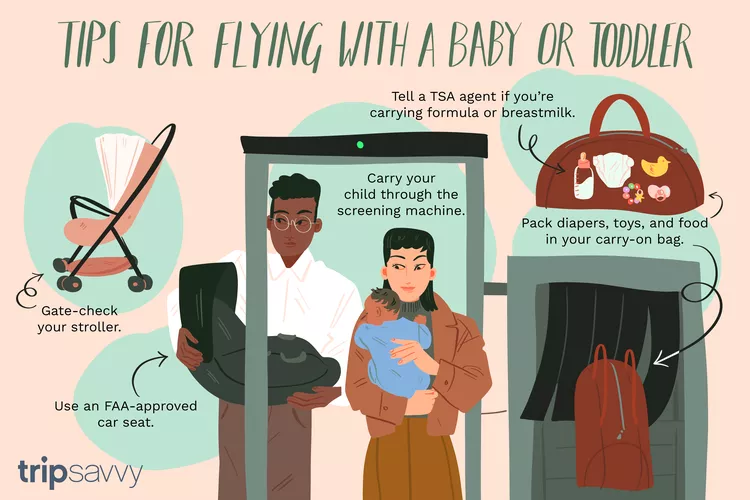Top Tips for Flying With a Baby or Toddler
Air travel can be challenging, particularly when you are accompanied by an infant or toddler. The stress associated with checking in, navigating security, and boarding can be overwhelming. However, with thoughtful planning, you can make the journey smoother.
Firstly, it is advisable to acquire a separate ticket for your child, despite the fact that children can fly free from birth to age two. This ensures both comfort and safety. Additionally, confirm that your child travels in an FAA-approved car seat to avoid having to check the seat. Prior to your trip, familiarize yourself with your airline’s car seat policy.
When reserving your ticket, utilize seat maps to select your seats early. It is also beneficial to inform your airline that you are traveling with an infant or toddler. While bulkhead seats may appear to offer more legroom, sitting towards the back can be more advantageous due to easier access to lavatories, increased overhead bin space, and a higher likelihood of vacant seats.
Moreover, spend the extra money to check your luggage to avoid the hassle of extra carry-ons. It’s also useful to consider tips for minimizing baggage fees. Print your boarding passes at home to streamline your airport experience.
Prepare for potential flight delays or cancellations by packing extras such as diapers, wipes, bottles, powdered formula, and a change of clothes. Don’t forget to pack some books, toys, coloring sets, and healthy snacks to keep your little one entertained.
Once you arrive at the airport, you will need to navigate the Transportation Security Administration (TSA) checkpoint. Therefore, it’s wise to review the TSA’s list of approved items that you can carry through security. Medically necessary liquids such as baby formula, breast milk, and medications can bypass the 3.4-ounce liquid restrictions. Although these liquids do not need to be in a zip-top bag, it is important to inform a Transportation Security Officer that you have medically necessary liquids during the screening process, as they may undergo extra inspection.
Typically, you will need to take your child through the screening machine while managing other items. Ensure that you have your baby in your arms, as you might need to remove the stroller from the process. It’s a good idea to identify the nearest restroom for any emergencies that may arise before boarding. Arriving at your gate early allows you to make use of pre-boarding, which can be helpful for settling in with your child before the rush of boarding begins.
When it comes time to board, ask the gate agent to gate-check your stroller or non-certified car seat so it will be convenient when you reach your destination. Keep in mind that certain checked items, like large strollers or car seats, may be delivered separately from standard luggage. Thus, if any of your luggage goes missing, check the oversized luggage area first.
If you checked a stroller at the gate, it is advisable to take your time deplaning, as the stroller will take longer to arrive. Waiting for the crowd to disperse can help you avoid disturbing your baby or toddler unnecessarily.
Edited by Benet Wilson





